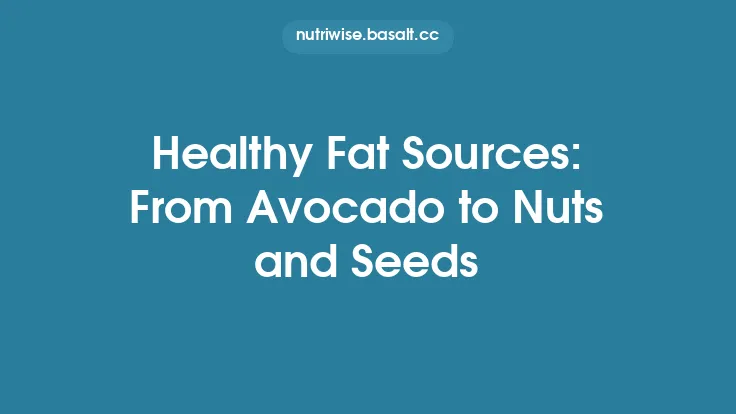Plant‑based diets can provide ample minerals—such as calcium, magnesium, zinc, iron, and selenium—when the foods are prepared in ways that make those nutrients more accessible to the body. While the raw composition of a vegetable, legume, or grain is important, the real determinant of how much of a mineral you actually absorb lies in the food matrix and the biochemical environment it creates in the gut. Below are evidence‑based, practical strategies you can incorporate into everyday meal planning to maximize mineral bioaccessibility from plant‑derived foods.
Understanding Plant‑Based Mineral Sources
Plant foods contain minerals in a variety of chemical forms. For example, calcium may be present as calcium oxalate in leafy greens, while iron is often bound to phytate complexes in beans and whole grains. The solubility of these forms dictates how readily they dissolve in the aqueous environment of the stomach and small intestine, which in turn influences absorption across the intestinal epithelium.
Key points to keep in mind:
| Mineral | Typical Plant Sources | Predominant Chemical Form | Relative Bioaccessibility |
|---|---|---|---|
| Calcium | Kale, bok choy, fortified plant milks, tofu (calcium sulfate) | Calcium oxalate, calcium carbonate, calcium sulfate | Oxalate‑bound calcium is poorly soluble; calcium sulfate in tofu is highly soluble |
| Iron (non‑heme) | Lentils, chickpeas, spinach, quinoa | Ferric phytate complexes, ferric oxalate | Strongly inhibited by phytate and oxalate |
| Zinc | Pumpkin seeds, beans, whole grains | Zinc phytate, zinc bound to protein | Phytate reduces solubility |
| Magnesium | Nuts, seeds, whole grains, leafy greens | Magnesium phytate, magnesium carbonate | Moderately affected by phytate |
| Selenium | Brazil nuts, whole grains, legumes | Selenomethionine, selenate | Generally well absorbed, but can be reduced by high fiber |
Understanding which form predominates in a given food helps you select the most effective preparation method to liberate the mineral.
Common Antinutrients That Hinder Mineral Uptake
Several naturally occurring compounds in plants bind minerals and limit their solubility:
- Phytate (myo‑inositol hexakisphosphate) – Found in seeds, legumes, nuts, and whole grains; forms strong chelates with calcium, iron, zinc, and magnesium.
- Oxalate – Abundant in spinach, beet greens, rhubarb, and certain nuts; precipitates calcium as calcium oxalate, an insoluble crystal.
- Polyphenols and Tannins – Present in tea, coffee, cocoa, and some legumes; can complex with iron and zinc.
- Saponins – Occur in quinoa and soy; may interfere with mineral transporters when present in high concentrations.
These antinutrients are not inherently “bad”; they also confer health benefits such as antioxidant activity. The goal is to modulate their levels enough to improve mineral release without stripping the food of its protective compounds.
Soaking and Sprouting: Simple Techniques to Reduce Antinutrients
Soaking
- Why it works: Water penetrates seed coats, activating endogenous phytases that begin hydrolyzing phytate.
- Practical steps:
- Rinse beans, lentils, or whole grains under running water.
- Submerge in warm (≈30 °C) water for 8–12 hours; add a pinch of sea salt or a splash of lemon juice to lower pH and boost phytase activity.
- Discard the soaking water (it contains leached phytate and soluble oxalate) and rinse before cooking.
Sprouting
- Why it works: Germination dramatically increases phytase activity, often reducing phytate content by 30–70 % within 24–48 hours.
- Practical steps:
- After an initial soak, drain and spread seeds or beans in a sprouting jar or tray.
- Rinse twice daily, keeping them in a dark, well‑ventilated area.
- Harvest sprouts when they reach 1–2 cm in length (typically 2–3 days for mung beans, 4–5 days for chickpeas).
Both methods are low‑tech, require no special equipment, and can be incorporated into weekly meal prep routines.
Fermentation and Natural Leavening: Enhancing Mineral Bioaccessibility
Fermentation leverages microorganisms (lactic acid bacteria, yeasts) to produce organic acids and enzymes that degrade antinutrients.
- Sourdough Bread – The prolonged fermentation (12–24 h) reduces phytate in whole‑grain flour by up to 60 %. The resulting loaf delivers more bioavailable zinc and iron.
- Fermented Vegetables (e.g., kimchi, sauerkraut) – Lactic acid bacteria lower pH, increasing solubility of calcium and magnesium.
- Tempeh – Fermentation of soybeans with *Rhizopus* spp. not only reduces phytate but also partially degrades oxalate, improving calcium availability.
Implementation tip: When making homemade sourdough or fermented foods, aim for a starter that is active (bubbling) and maintain a fermentation temperature of 24–28 °C to maximize phytase activity.
Incorporating Organic Acids and Vitamin C for Better Absorption
Acidic environments promote the dissolution of mineral salts and can convert bound forms into more absorbable species.
- Citrus Juice or Vinegar – Adding a splash of lemon juice or a tablespoon of apple cider vinegar to cooked legumes or grain salads can lower the pH of the dish, enhancing iron and zinc solubility.
- Vitamin C‑Rich Foods – Ascorbic acid reduces ferric (Fe³⁺) to ferrous (Fe²⁺), the form preferentially taken up by the duodenal transporter DMT1. Pairing a cup of bell‑pepper strips, strawberries, or kiwi with iron‑rich plant foods (e.g., lentil soup) can boost non‑heme iron absorption by 2–3 fold.
Practical pairing: Toss cooked quinoa with a dressing made from olive oil, lemon zest, and a teaspoon of orange zest; the citrus component supplies both acid and vitamin C.
Strategic Use of Mineral‑Rich Cooking Liquids and Utensils
- Cooking in Mineral‑Enriched Water – If your tap water is low in calcium or magnesium, consider adding a pinch of calcium carbonate (food‑grade) or using mineral water for boiling beans and grains. The added ions can shift equilibrium, encouraging the release of bound minerals from the food matrix.
- Cast‑Iron Cookware – Simmering acidic foods (tomato‑based stews, bean soups) in a well‑seasoned cast‑iron pot can leach small amounts of iron into the dish, modestly increasing its iron content. This effect is most pronounced when cooking for longer periods (≥1 hour) and with a pH < 5.
Caution: Excessive iron leaching may be undesirable for individuals with iron overload conditions; use this method judiciously.
Balancing Mineral Intake with Adequate Gastric Acidity
Gastric acid (hydrochloric acid) is a primary driver of mineral solubilization. Certain lifestyle factors—such as chronic use of proton‑pump inhibitors (PPIs) or high‑dose antacids—can raise gastric pH, diminishing mineral bioaccessibility.
- Practical advice:
- If you regularly use acid‑suppressing medication, consider timing your mineral‑rich meals at least 2 hours after the dose, when residual acid secretion may be higher.
- Chew a small piece of fresh ginger or sip a warm herbal tea (e.g., ginger‑lemon) before meals to stimulate gastric acid production naturally.
Timing and Meal Composition: Practical Tips
- Separate High‑Phytate and High‑Oxalate Foods – Consuming large amounts of both in a single meal can compound inhibitory effects. For example, pair a kale salad (high oxalate) with a lentil side (high phytate) on different days or separate them by several hours.
- Stagger Mineral‑Rich Snacks – Spread calcium‑rich snacks (e.g., fortified soy yogurt) throughout the day rather than clustering them, allowing the gut to process each load efficiently.
- Include Small Amounts of Healthy Fats – While fats do not directly increase mineral absorption, they improve overall satiety and can aid the absorption of fat‑soluble vitamins that support intestinal health (e.g., vitamin D, which enhances calcium uptake).
Monitoring and Adjusting Your Diet for Optimal Mineral Status
- Blood Tests – Periodic assessment of serum ferritin, calcium, magnesium, and zinc can reveal whether your dietary strategies are effective.
- Food Diaries – Track preparation methods (soaking time, fermentation, acid addition) alongside meal composition to identify patterns that correlate with improved lab values.
- Gradual Implementation – Introduce one technique at a time (e.g., start with soaking beans) and observe any changes in digestion or energy levels before adding additional steps.
Integrating These Practices into Everyday Life
Boosting mineral absorption from plant‑based foods does not require radical dietary overhauls. By incorporating a few targeted actions—soaking legumes, sprouting seeds, adding a splash of lemon, using fermented grains, and being mindful of meal timing—you can transform the same grocery list into a more bioavailable nutrient source. Over weeks and months, these incremental changes accumulate, supporting bone health, immune function, and overall vitality without compromising the rich phytochemical profile that makes plant foods so beneficial.
Adopt the strategies that fit your routine, experiment with combinations, and let your body’s response guide you toward the most effective, sustainable approach for optimal mineral nutrition.





